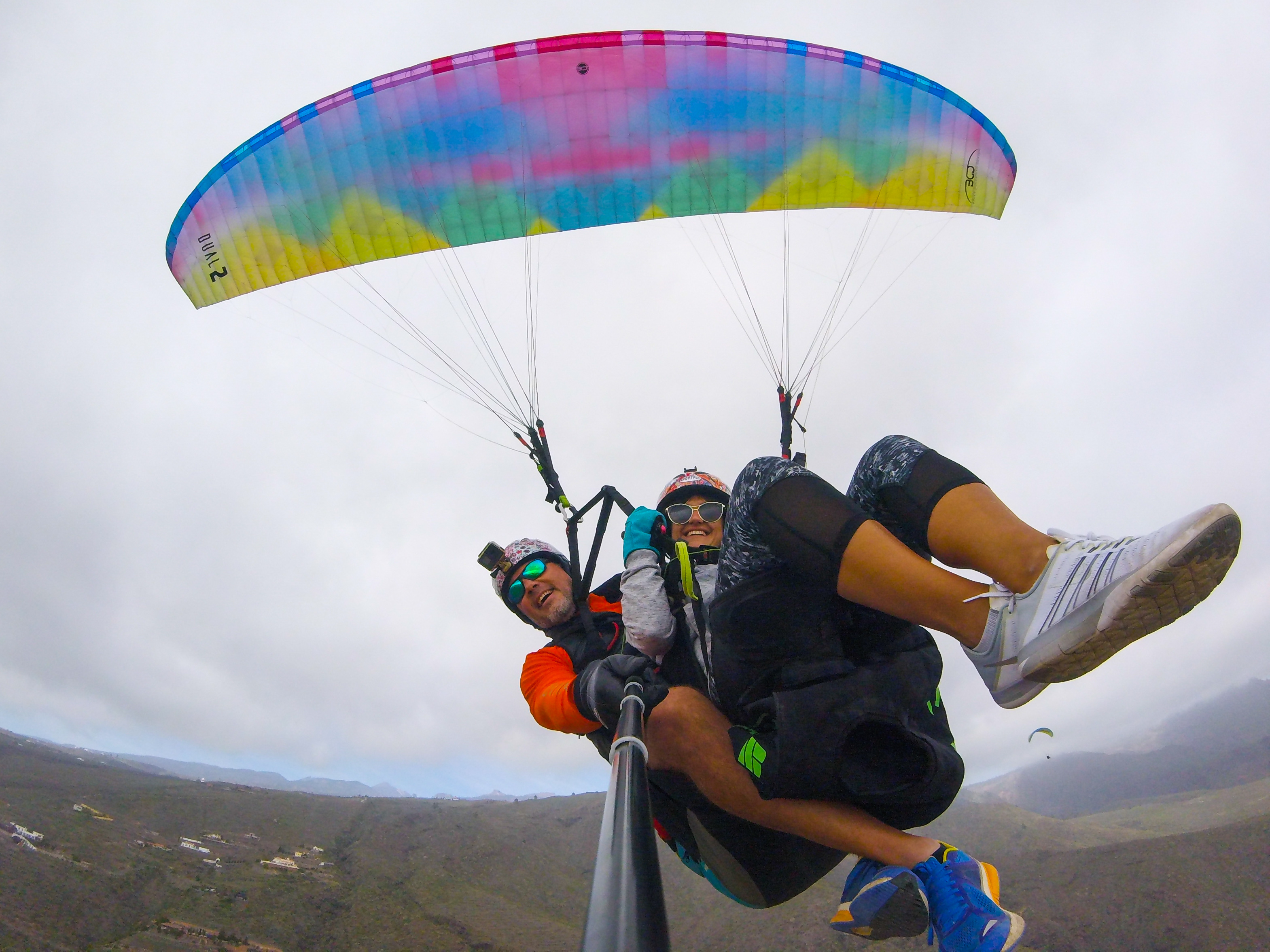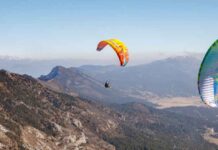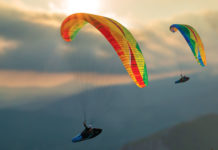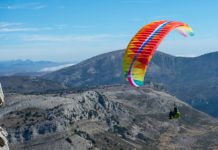BGD’s eye-catching Dual 2 is one of the most attractive to fly tandem paragliders I’ve ever tried, and I say this from the perspective of my everyday work as a tandem pilot, an activity I’m passionate about, where passenger satisfaction is a must, but the pilot’s joy is also important.
Beating the wonderful touch and agility of the Dual seemed a hard task, but BGD achieved it, and they also improved a variety of other things. In brief, the completely new design made by Bruce Goldsmith is a total evolution of the Dual that was aimed at achieving an easier, safer and more agile performance. Let’s review it part by part:
Under control ground handling
In first place, I have to mention the Dual 2’s sweet inflation. It is soft and progressive, the wing goes up in a predictable manner and stays above the head with minimum intervention of the pilot. Plus, it has great lift even at low speeds, so it basically takes one to three steps to be airborne, making the entire process stress-free.
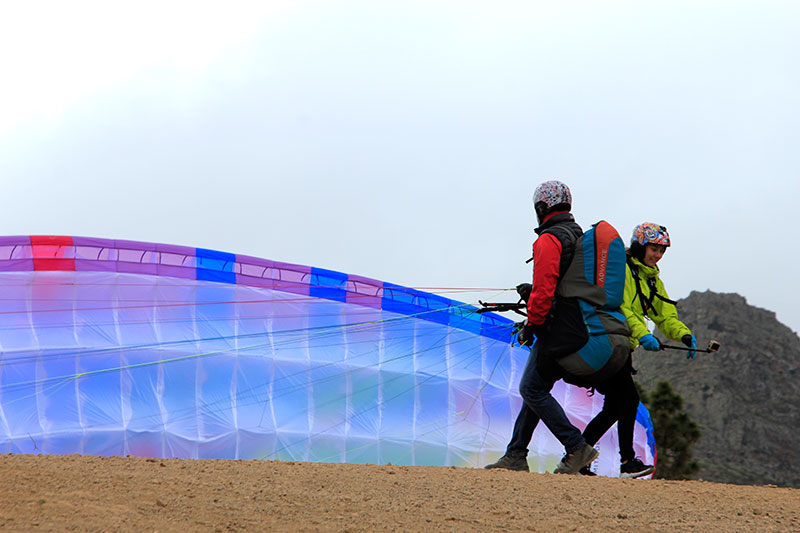
From all the tandem wings that I’ve flown, the Dual 2 is one of the easiest to inflate and ground handle and this alone makes it an ideal model to get started in tandem flights.
Yet even the most experienced pilots will be grateful for the wing’s docility when operating in complicated take-off sites. For example, the Taucho launch in Tenerife, where it is normal to find very gusty, crossed wind…
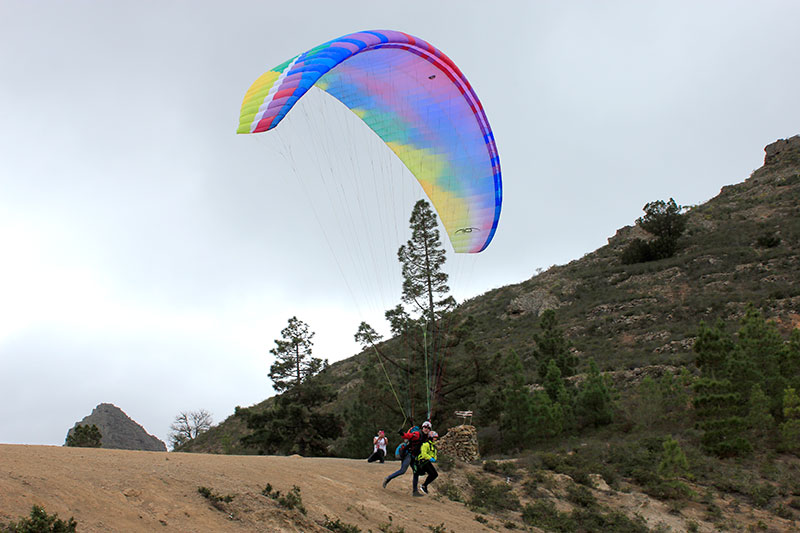
This is where I fly, with the intense pace demanded by tandem work, where you simply cannot wait for the good gust to come along and, believe me, it is a great thing when the glider helps you and doesn’t come up with unpleasant surprises.
Comfortable to fly

The brakes are smooth, slightly cushioned, yet gradual and precise.
This softness is greatly appreciated when the flight we need to make does not entail a simple glide. If your tandem flights demand you to gain height your arms will love this paraglider; it goes up easily and it is smooth and comfortable.
Winner turn
The factory setting of the brakes is long, very long, so after an uncomfortable flight, I shortened the brake line by 12 cm. In the following flights, after finding my personalized adjustment, I verified how the Dual 2 is capable of turning merely by thought. The sensitive tips transmit a lot, and this is why, if you are flying light, you may experience tip “collapses” of little importance.
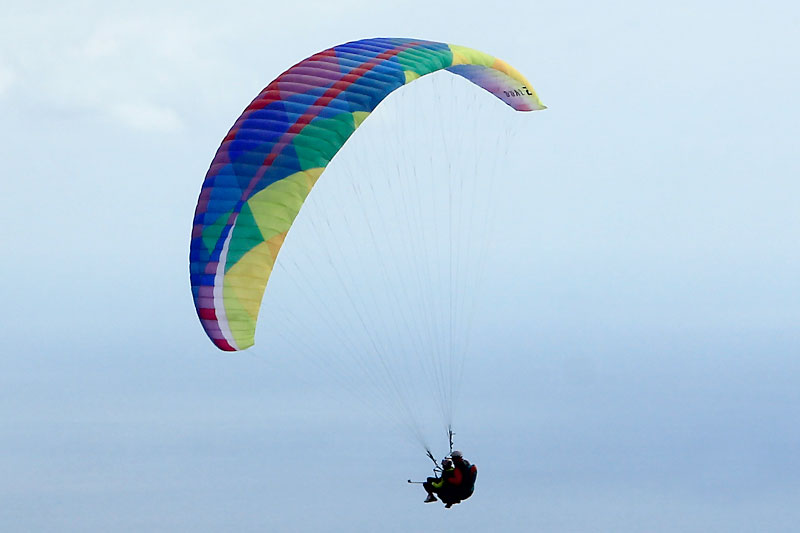
Wing-overs are natural, without effort, beautiful and progressive. No other tandem wing is so much fun in this regard.
In the same manner, climbing in any type of thermals results very easy. It is easy to get in the thermal, easy to understand immediately the good side to turn to, easy to hold the turn and easy to adjust the angle and radius of the turn. Without the slightest doubt, it is a true thermal devouring beast.
In my point of view, the Dual 2 counts with “the best turn of the tandem spectrum” that I’ve ever tried, (and I’ve tried all the tandem wings which deserve to be flown) intuitive, direct and gradual, it is almost like flying a solo wing, and even better than a number of solo wings… (he he)
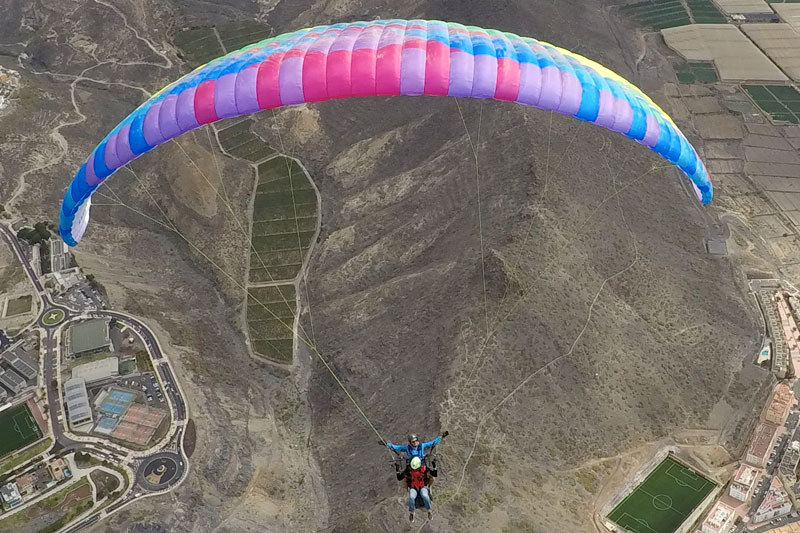
Safety and comfort
Oddly enough, and in spite of its agility, the Dual 2 offers great stability in the pitch axis. The wing keeps itself over the head and absorbs a great part of the turbulences making even the hottest, shaky days feel flyable.
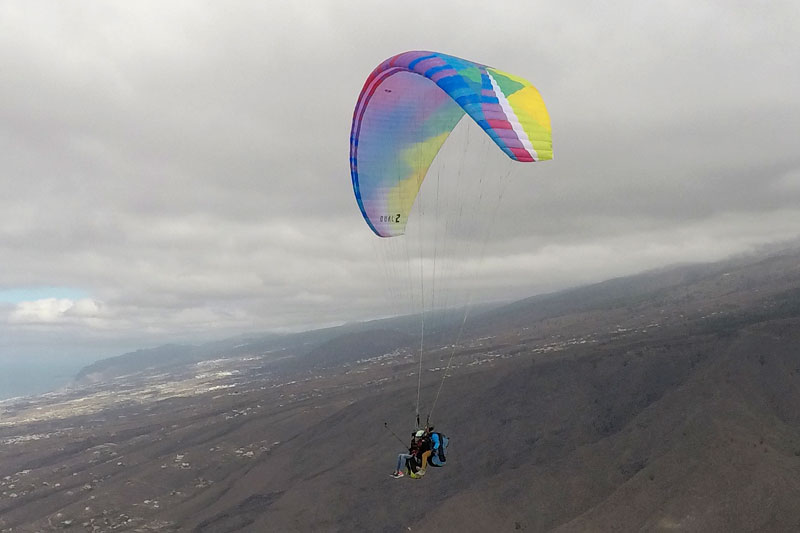
Surges forward are moderate and the wing is easy to handle.
The center of the wing holds a lot of pressure and the tips are more loose, to provide good lift information, but if you don’t keep the pressure actively you may experience mild tip collapses.
«Hard» ears.

BGD took the effort of adding ear blockers to this tandem wing, but frankly, they are not required because big ears do not come out on their own. Nice ears are made after pulling the external A lines in, and the descent rate goes from -1 to -2 m/s, enough to descend a bit quicker.
The good part is that they stay put very stable without fluttering, all the contrary from those wings where the ears tend to open on their own and start yanking and fluttering even after being “locked”.
There are basically two ways to open the ears of the Dual 2: On one side, a powerful symmetrical bombing and boom! they are open. To open them in a boom, the pilot needs to have strong arms. The second option is opening them one by one, pumping and loading the body to one side and then the other. When you open the ears in this manner, it requires less strength, yet the procedure is equally effective.
In the above video, you can see me pulling in and releasing the ears of the Dual 2.
The fact that big-ears do not open on their own is an advantage for me, since I tend to use ears in case I want a quicker descent rate without making turns, for instance, when my passenger is sick. Therefore, the ears I make are two or three minutes long, so it’s good for me not to have to be pulling down to hold them, or having to insert lines in the lock.
TOP efficiency
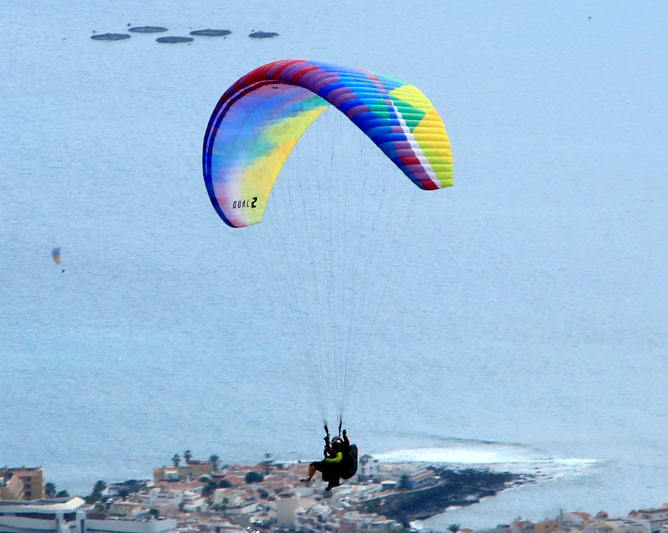
After several flights with this paraglider and watching it fly next to me, I can certify that the BGD Dual 2 is today one of the EN B tandem wings with the best performance, very equal in glide to the current models of reference like for example: Fuse 2, Magnum 4, Bibeta 6 or Pasha 6.
The strong point, as I’ve already mentioned, is its splendid turn.

In the pros and cons, the con is that with released trimmers the glider’s maximum speed is slightly inferior, around 1km/h less (with equal wing load) than some of the tandem wings I’ve already mentioned. Even so, the Dual 2 floats a lot keeping a spectacular penetration so that during complicated glides in headwind you can reach the same point with the same height.
You also notice this floating capacity at the time of climbing in weak lifts.
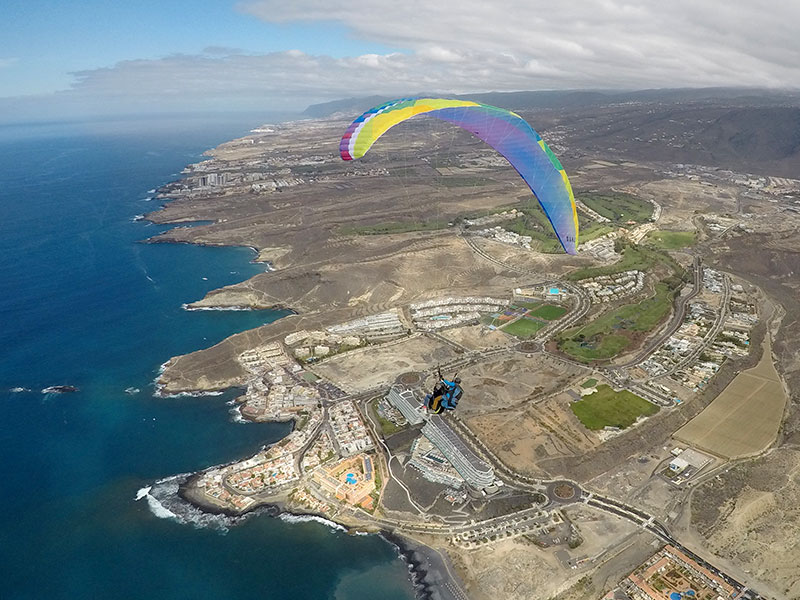
Wider Weight range.
The first Dual was only available in 40m2, though it was polyvalent and you could carry a wide range of passenger weights. But the weight range sometimes fell short and you wished you had a larger…or a smaller size. Understanding this as a true requirement of professional tandem pilots, for their new Dual 2, BGD has manufactured two sizes: 37.8 and 41.8 m2, covering a range that now goes from 100 to 200 kg and 120 to 220 kg respectively.
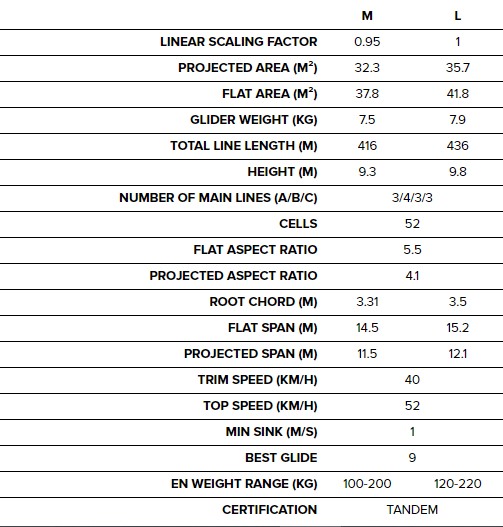
In my flights with the Dual 2 L, 120 to 220 kg, I was able to confirm a good efficacy throughout this weight range. And with a flight load of 170 kg, I found the best performance compromise.
Details
The refined inner design and construction work of the Dual 2 includes numerous details like the use of Cord Cut Billow, a 3D pattern that improves the definition of the leading edge and the outer sail.
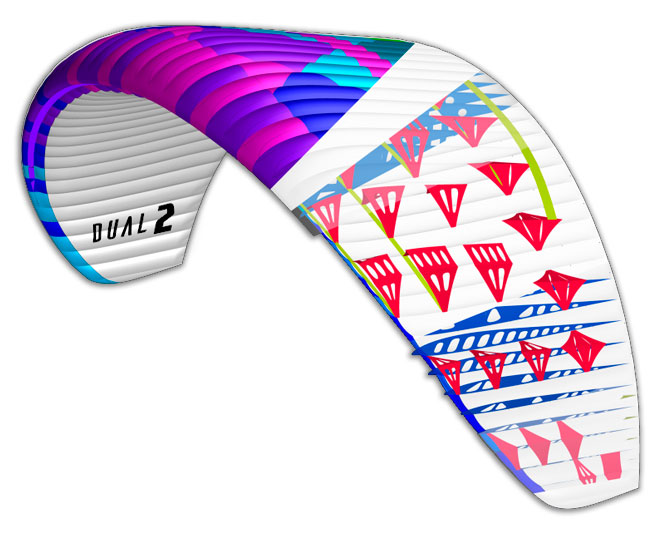
BGD’s shark nose with continuum wires forces the leading edge to remain open. The materials used in the construction are top of the line guaranteeing great longevity.
The most questionable element of this tandem wing are the trimmers: they are long, run well, offer easy use and a good speed gain but there are two aspects to be improved. 1. The trimmer strap finishes in a small plastic ball that ends up hitting the helmet in flight since the Velcro to fix it to the line tends to lose the grip quickly. And 2. You must be careful at the time of closing the trimmer because if it folds the strap ends up deteriorating fast. The good news is that the ball is removable and the straps can be easily replaced by opening a maillon. The Dual 2 comes with a set of trimmer replacements.
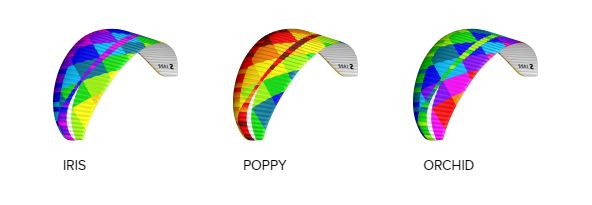
Colorful looks
Finally, allow me to add that the Dual 2 counts with a joyful and colorful style, the color palette is BGD’s bet to place their Dual 2 as the most attractive and daring tandem model of the industry.
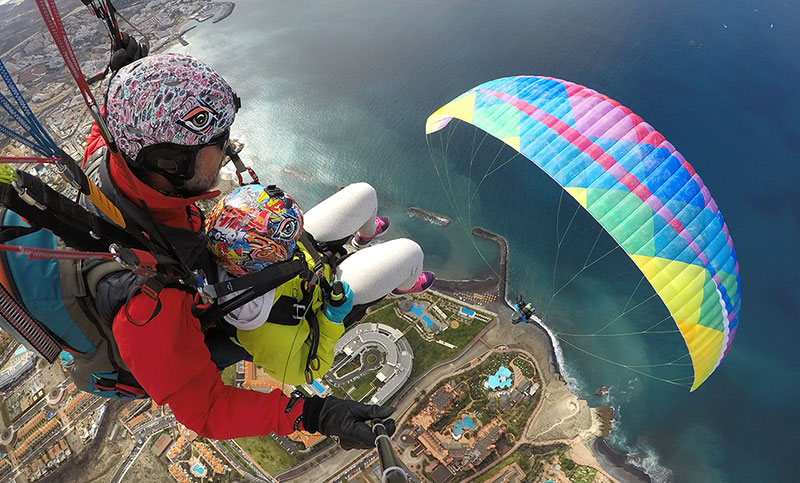
Conclusion
One of the prettiest all-time tandem paragliders. Isn’t it? It places itself at the TOP of the ranking of current tandem wings, with good-natured inflation that makes it easy and accessible. It turns like no other and offers a winner glide ratio. Also, it offers good sensitivity to understand what is going on in the air. It is turbulence resistant and has smooth handling, which is what makes it so comfortable to work with; it is nearly everything the professional pilot may need.
+Info: https://www.flybgd.com/en/paragliders/dual-2–paraglider-2021-755-0.html


